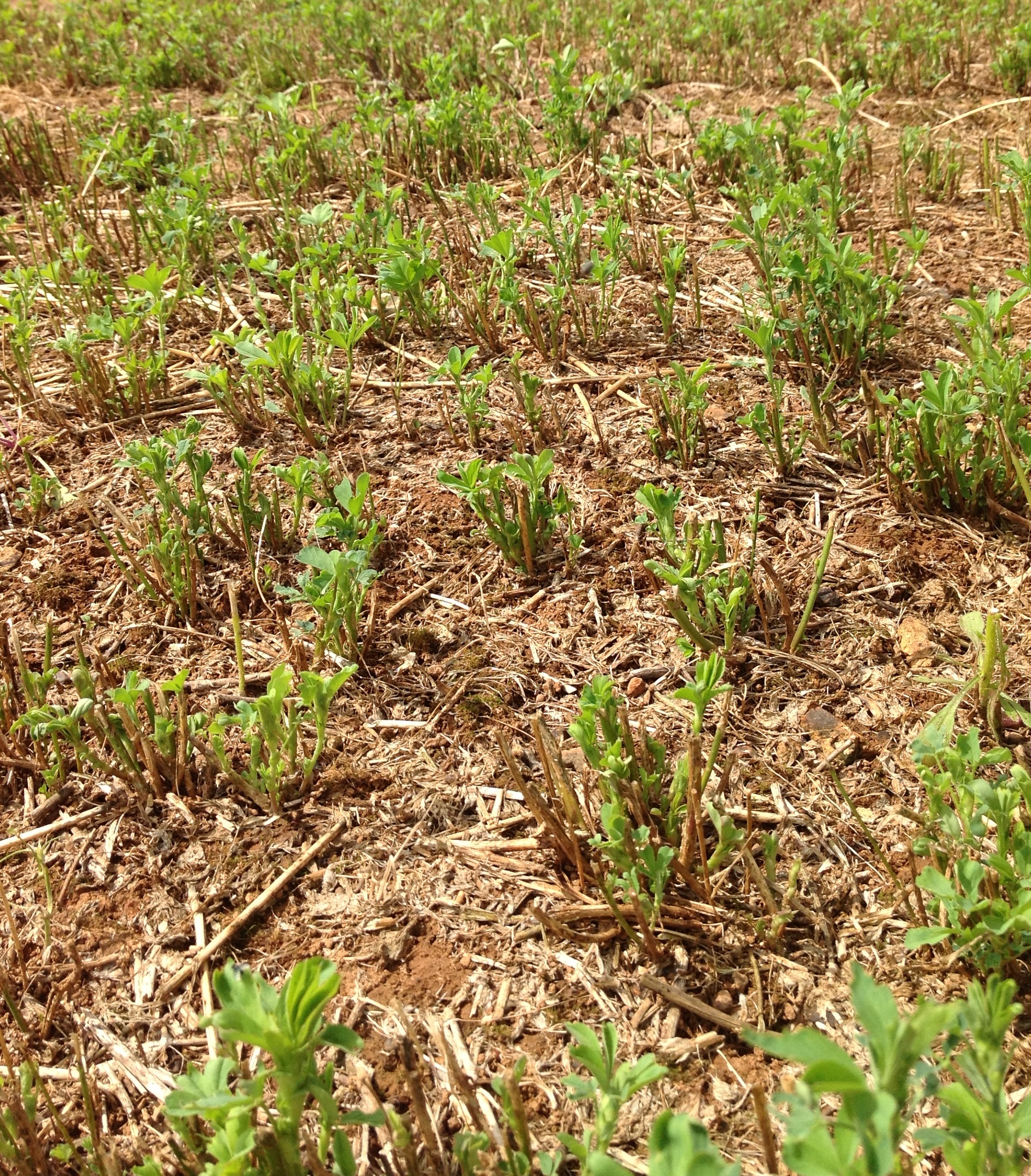- Home
- Knowledge library
- Fertiliser recommendations for lucerne
Fertiliser recommendations for lucerne

Fertiliser recommendations for lucerne
We look at the factors affecting the nutrient requirements of lucerne.
Lucerne has no requirement for nitrogen fertiliser – apart from that needed for establishment in low nitrogen soils – after hungry crops, like cereals.
Do not apply more than 30 kg N/ha to lucerne in the seedbed because higher N application can reduce nodulation and ability to fix N in the soil.
Lucerne can fix up to approximately 250 kg N/ha per year when taking both above and belowground production into account. This fixation will increase soil N content, which can be used by the following crops.
Lucerne, like other legumes, has a high phosphate and potash requirement, with 10 kg of phosphate and 30 kg of potash removed for each 3 tonnes of fresh weight silage (or 1 tonne of dry matter). If P and K indices are satisfactory, replace around 75% of the recommendations from organic materials or manufactured fertiliser, allowing soil mineral reserves to replace the remainder.
Recommendations for establishment
Do not use slurry in the first year. Limited amounts of slurry may be used in following seasons: up to 25,000 litres of slurry/ha in the autumn after the first frost and after any autumn growth has been removed.
Nutrient recommendations for phosphate and potash for lucerne establishment
|
| P or K soil index | ||||
|---|---|---|---|---|---|
| 0 | 1 | 2 | 3 | 4 | |
|
Phosphate (kg/ha) |
100 |
65 |
40 |
25 |
0 |
|
Potash (kg/ha) |
100 |
65 |
40 |
25 |
0 |
Source: Defra, Field Options Ltd
Recommendations for silage cuts
Nutrient recommendation for phosphate and potash for silage cuts
|
| P or K soil index | ||||||
|---|---|---|---|---|---|---|---|
| 0 | 1 | 2 | 3 | 4 | |||
|
First cut |
Nutrient |
Phosphate (kg/ha) |
80 |
65 |
40 |
25 |
0 |
|
Potash (kg/ha) |
120 |
100 |
75 |
25 |
0 |
||
|
Subsequent cuts |
Nutrient
|
Phosphate (kg/ha) |
80 |
65 |
40 |
25 |
0 |
|
Potash (kg/ha) |
100 |
75 |
50 |
25 |
0 |
||
Source: Defra, Field Options Ltd
After each cut, 30–40 kg/ha of potash should be applied, with the balance being applied in the autumn with phosphates.

Regrowth after cutting lucerne
Phosphorus deficient lucerne can be identified by its fine spindly stems and narrow leaves, which become bluish green or, in severe cases, purple. This is particularly common in acidic soils.
Potassium deficiency presents as white or yellow spots around the margins of older leaves, or as a yellowing of the leaf margins and tips. Deficiencies of potash in lucerne can result in significant yield reductions, coupled with increased incidence of leaf diseases.
Placement of fertiliser
In most cases, top-dressing of fertiliser is sufficient, although responses can be poor if conditions are very dry. In these instances, fertilisers could be placed at 7–15 cm deep using specialist equipment.
To ensure optimum establishment, banded fertiliser application 2–3 cm below the seed is advisable at sowing with a specialist drill.
Other nutrients
In addition to phosphate and potash, significant quantities of calcium and sulphur can be removed when growing and harvesting lucerne. To optimise yield, maintain soil pH above 6 and carry out regular soil testing.
You can normally identify sulphur-deficient plants by yellowing and stunting of young shoots. Low sulphur soils may require up to 25 kg/ha per year to optimise growth.
Trace elements
Lucerne can be sensitive to deficiencies of boron, molybdenum and zinc.
Boron deficiency is identified as yellow leaves with a red-purple tinge and malformed heads. High levels of boron can also be toxic to the plant, so care must be taken when applying it. Herbage analysis is a good way to test for boron deficiency.
Molybdenum is essential for plant nodulation and production. Pale leaves, thinning crops and wilting petals are all signs of molybdenum deficiency, which often occur at low pH levels (pH <5.0). Small applications of molybdenum may be required every 4–5 years. It is best to seek advice before applying.
Zinc deficiencies can result in an increased incidence of root rot, leaf disease and reduced yield. This is more common on high pH soils. Zinc sulphate can be applied to correct deficiencies.
Tissue analysis
Tissue analysis is another useful way to determine nutrient deficiencies in lucerne, especially for sulphur and molybdenum, which cannot be accurately measured through soil tests. Samples should be taken from similar plant height and before flowering. Avoid using diseased or insect damaged tissues.


